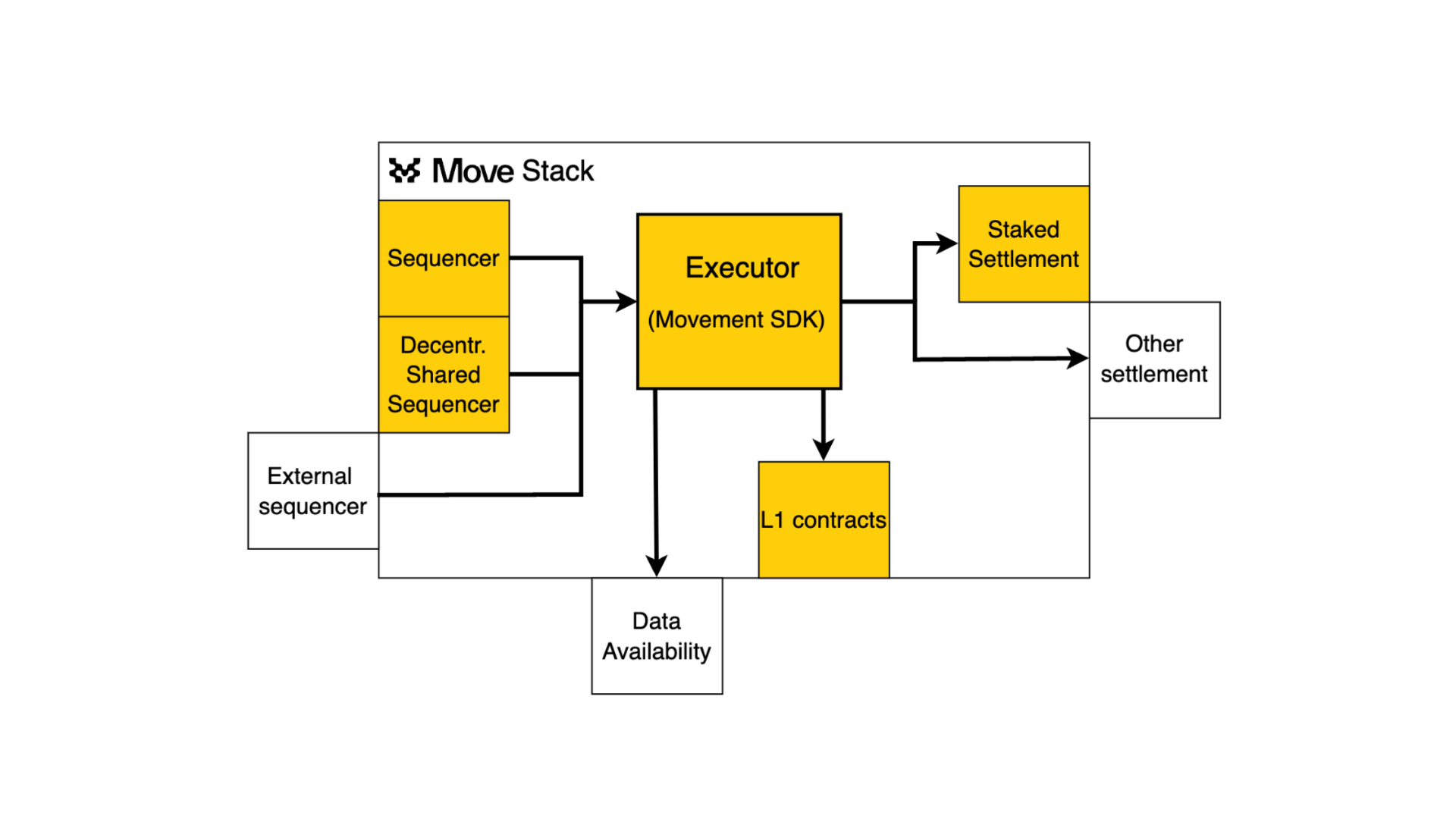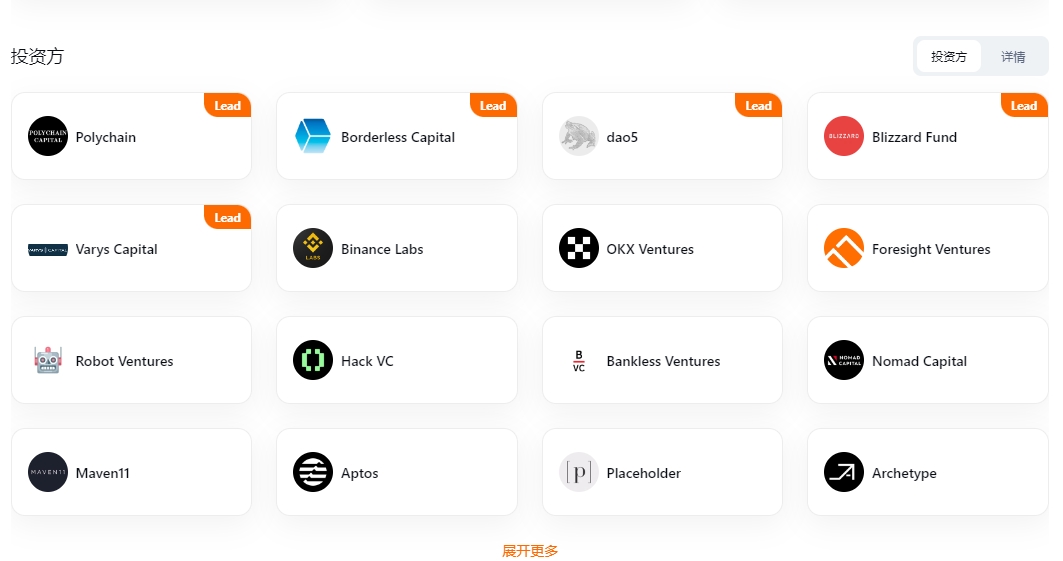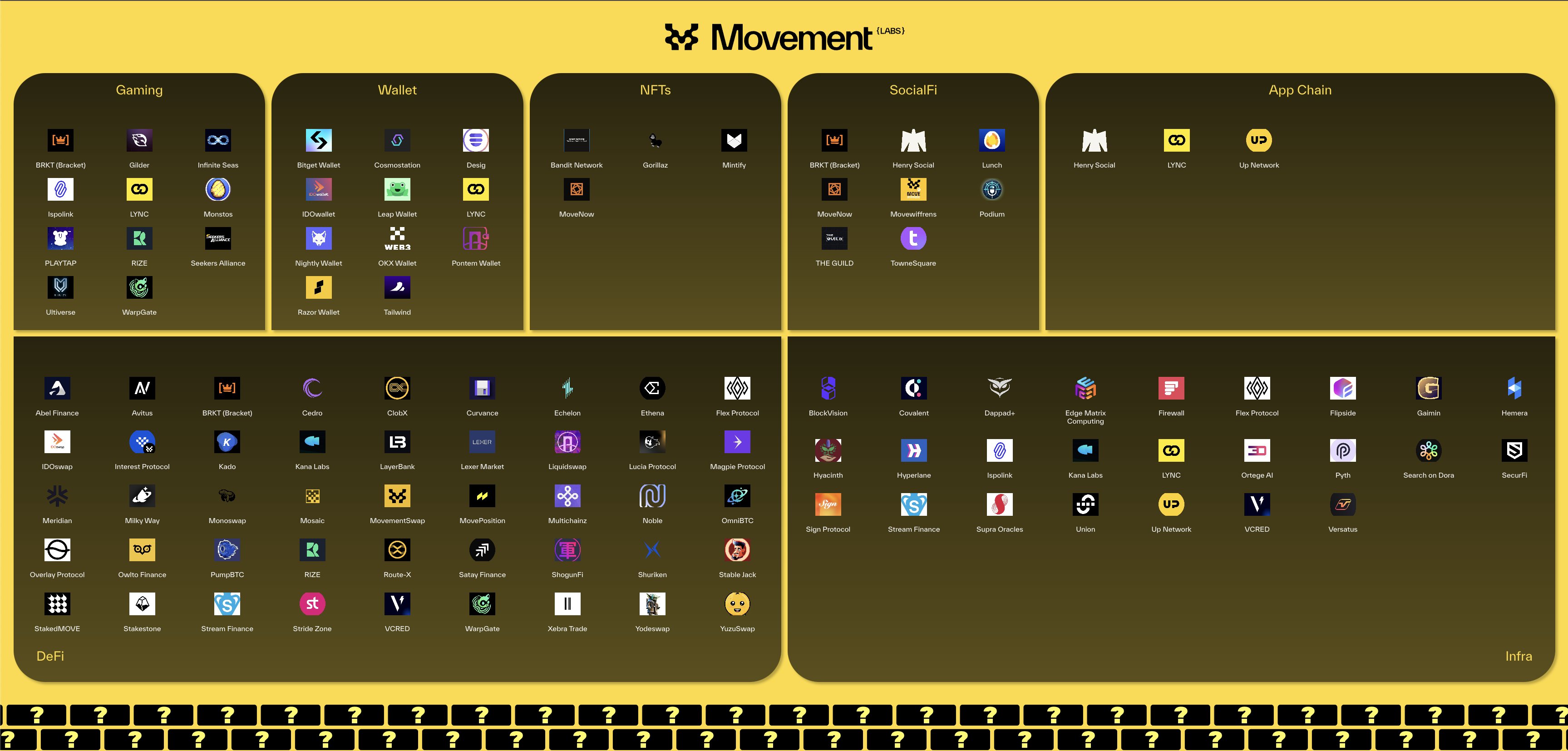Author: Hippo Research
Before discussing Movement, let's first familiarize ourselves with the most mainstream smart contract programming languages in the current crypto field:
Solidity: The most commonly used smart contract programming language, designed specifically for the Ethereum platform. It is a high-level object-oriented language with syntax similar to JavaScript. Solidity is the preferred language for writing smart contracts on Ethereum.
Rust: Used for writing smart contracts on the Solana blockchain. Rust is a systems programming language known for its high performance and memory safety. Smart contracts on Solana, known as "programs," are written in Rust and compiled into WebAssembly (Wasm).
Move: Initially developed by the Facebook (now Meta) team for smart contract language development on the Libra (later renamed Diem) blockchain. Move focuses on security and verifiability to prevent common smart contract vulnerabilities.
Vyper: Also designed for Ethereum smart contracts, Vyper is more concise and secure compared to Solidity. Vyper avoids some of the complex features in Solidity to reduce the risk of security vulnerabilities.
Cairo: Used for writing smart contracts on StarkNet, Cairo is a language that supports zero-knowledge proofs, focusing on scalability and privacy protection.
Tezos Michelson: A stack-based language designed for the Tezos blockchain. Despite being relatively low-level, it provides strong support for formal verification, making it easier to write secure smart contracts.
Clarity: A smart contract language used for the Stacks blockchain (integrated with Bitcoin). Clarity is an interpretive language that does not support Turing completeness, aiming to enhance the predictability and security of contracts.
The above smart contract programming languages each have their own characteristics. Among them, Solidity, the programming language for Ethereum, is the primary language for smart contract development. Despite being widely used in blockchain development, it still faces the following pain points:
Security: The security of Solidity smart contracts is a major pain point. Once deployed, vulnerabilities in the code can be exploited by attackers, leading to financial losses. Historical security incidents like The DAO were caused by vulnerabilities in smart contracts being exploited by attackers, resulting in numerous projects suffering financial losses due to hacker attacks.
Development and debugging difficulty: The development and debugging process for Solidity is complex. Due to the immutability and decentralized nature of blockchain, developers find it difficult to directly debug contracts in the mainnet environment. Although there are development tools like Remix and Truffle, debugging still requires certain skills and experience.
Steep learning curve: For traditional web developers, Solidity has a steep learning curve. While Solidity is a programming language similar to JavaScript, it introduces blockchain-specific concepts such as gas fees and contract states, requiring beginners to spend more time mastering them.
Contract upgrade difficulty: Upgrading Solidity smart contracts is a challenge because once deployed on the blockchain, contracts cannot be modified. Therefore, when contracts need feature updates or error fixes, developers often need to use complex design patterns such as proxy patterns to achieve contract upgrades, increasing development complexity.
Gas cost optimization: Executing Solidity code consumes gas, and the cost of gas directly affects user experience and developer cost control. Writing efficient Solidity code to reduce gas consumption is a concern for developers, often requiring a deep understanding of the Ethereum Virtual Machine (EVM).
Contract complexity management: As smart contract functionality increases, code complexity also increases, making it more difficult to manage complex contracts. Complex contracts are prone to unexpected behavior, making them difficult to test and maintain, placing higher demands on developers.
Immature tools and ecosystem: Although Ethereum has a relatively complete development toolchain, Solidity and its related tools still have room for improvement compared to traditional development ecosystems. Some tools may lack functionality or have compatibility issues, affecting development efficiency.
These pain points require Solidity developers to possess high professional skills and handle development processes carefully to avoid potential security risks and high gas consumption. Fortunately, due to its unique advantages, Move language can address many of the issues present in Solidity language. For example:
High security: Move language focuses on resource security management, designed to prevent common blockchain attacks such as replay attacks and double spending. It ensures the secure management of assets through its type system and resource model, allowing resources to be created, destroyed, or transferred in specific ways, avoiding unsafe operations.
Resource model: Move uses a unique resource model, treating assets (such as tokens) as "non-replicable and non-loseable" resources. This means that assets can only be transferred from one owner to another, eliminating the risk of duplicate creation or accidental loss of assets.
Flexibility and modularity: Move language supports modular design, allowing developers to reuse code and create more complex and scalable smart contracts. Additionally, Move's type system allows the definition of custom resource types, enabling developers to build complex financial and business logic.
Formal verification: Move language supports formal verification, allowing developers to verify the correctness of smart contracts before deployment, further enhancing security. Verifying smart contract behavior through mathematical proofs can reduce vulnerabilities and errors in smart contracts.
Concurrency: Move design considers the need for concurrent execution, supporting the parallel processing of multiple transactions. This is crucial for improving the performance of blockchain networks and significantly increasing blockchain throughput.
Strong adaptability: Although Move was initially designed for Libra/Diem, its characteristics independent of specific blockchains allow Move to be adapted to other blockchain platforms. Several blockchain projects (such as Aptos, Sui) have begun adopting or exploring the use of Move language.
These features give Move language significant advantages in developing secure, efficient, and flexible smart contracts. However, the position of EVM in today's crypto field is almost unshakable. Is there a solution that can leverage the advantages of Move language and connect with EVM? This is the background for the birth of today's protagonist, Movement.

What is Movement?
Simply put, Movement aims to introduce the secure and efficient MOVE language into the EVM ecosystem. Movement consists of two core components, M1 and M2. Through the combination of M1 and M2, it provides a decentralized blockchain ecosystem that is secure, efficient, and interoperable. Movement is a modular framework for building and deploying Move-based infrastructure, applications, and blockchains in any distributed environment. The team is building a set of products and services that enable non-Move protocols to leverage the powerful features of the Move programming language without writing a single line of Move code. The team's first version, M1, redefines L1 as a vertically composable and horizontally scalable first-layer framework that is compatible with Solidity, connecting EVM and Move liquidity. In today's crypto market, the technical aspects of public chain development have become quite saturated. Attracting enough users and funds is the key factor for the survival of public chains. Movement takes a different approach by connecting with EVM liquidity, enabling its ecosystem to achieve interoperability with EVM and directly gain users and funds brought by EVM.
Working Principle
The Movement network has three main components to enhance its performance, security, and interoperability: the Move executor, staking settlement module, and decentralized shared sorter (M1). Each component plays a crucial role in ensuring the operation of Move-based rollups.
1. Move Executor
The Move executor is a core component of the Movement-SDK, supporting MoveVM and EVM bytecode. This dual compatibility provides a powerful execution environment, allowing developers to leverage the advanced features of the Move language while maintaining compatibility with existing Ethereum applications. The Move executor integrates the parallel execution capabilities of MoveVM with the existing EVM interpreter, ensuring compatibility and scalability.

Staking Settlement Module: The staking settlement module aims to provide fast finality for transactions within the Move Rollups network. By utilizing staked assets to validate proofs of state transitions, this module ensures high economic security and reduces latency. Validators stake assets and prove the correctness of state transitions, combining the security advantages of staking with the efficiency of fast transaction finality.
2. Security Mechanisms:
Ethereum Settlement: Validators stake assets to provide economic security, ensuring significant economic interests in network integrity. zk and Optimistic Rollups: zk-rollups provide security through validity proofs, while Optimistic Rollups rely on challenge periods to resolve disputes. Both methods have high latency and computational costs.
Staked Rollups: Compared to zk and Optimistic Rollups, it can provide fast finality and higher economic security without the need for extensive proof generation or challenge periods, reducing latency and improving user experience.
Compared to other Rollups: Unlike zk-rollups, Staked Rollups do not require expensive proof generation devices. Compared to Optimistic and zk-rollups, Staked Rollups significantly reduce latency and complete transactions within seconds.
Fast finality is crucial for interoperability and atomic cross-rollup transactions, making Staked Rollups an ideal solution for many applications.
3. Decentralized Shared Sorter (M1)
The M1 sorter is a decentralized and shared sorting mechanism that enhances network robustness, fairness, and resistance to censorship. By providing customizable transaction sorting, M1 supports cross-chain atomic swaps and pooled liquidity in the Move Arena ecosystem. This shared sorter ensures fair and efficient transaction sorting for all aggregated transactions.

Project Team

- Rushi Manche: Co-founder of Movement Labs, previously a software engineer at Aptos.
- Cooper Scanlon: After dropping out of Vanderbilt University, he built a SPAC DAO tool. After completing the joint venture, he established and audited the first yield aggregator with Move. He then founded Movement Labs, a next-generation infrastructure company unifying the blockchain environment with composable Move templates.
- Franck Cassez: Research Director at Movement, previously blockchain research director at Windranger Labs and ConsenSys. He holds a Ph.D. in Computer Science from the University of Nantes.
- Andy Bell: Engineering Director at Movement Labs, graduated from the University of Nottingham, previously Vice President of Engineering at Biconomy and CTO at Ajuna.
- Brian Henhsi: Strategic Director at Movement Labs, graduated from Tsinghua University, previously worked at Sui/Mysten Labs and Chia.
Investment Institutions

- On September 13, 2023, Movement Labs completed a $3.4 million pre-seed round of financing, led by Varys Capital, dao5, Blizzard The Avalanche Fund, Borderless Capital, and its cross-chain fund focused on the Wormhole ecosystem.
- On April 25, 2024, Movement Labs completed a $38 million Series A financing round, led by Polychain Capital, with participation from Hack VC, Foresight Ventures, Placeholder, Archetype, Maven 11, Robot Ventures, Figment Capital, Nomad Capital, Bankless Ventures, OKX Ventures, dao5, and Aptos Labs.
- On May 7, 2024, Movement Labs completed a $38 million Series A financing round led by Polychain Capital, with participation from Hack VC, Foresight Ventures, Nomad Capital, Bankless Ventures, OKX Ventures, and other investment institutions. Binance Labs also announced its investment in Movement Labs.
We can see that Movement has a strong and star-studded lineup of investors, and we have tried to participate in the test network of this project as much as possible. There should be good expectations for airdrops in the future.
Project Development
Currently, the ecosystem projects on Movement have reached over a hundred, covering various sectors such as Gaming, Wallet, NFTs, SocialFi, DeFi, and Infra. This level of prosperity for a public chain in the testing phase is remarkable, indicating the strength of the Movement team and the positive outlook of other projects on Movement.

Comparison with Competing Projects
What are the differences between Movement, Aptos, and SUI?
- Movement:
Movement is a new blockchain project aimed at enhancing the functionality and efficiency of the blockchain ecosystem by providing solutions for decentralized finance (DeFi) and decentralized applications (DApps).
Features: May include high throughput, low transaction fees, and strong security.
- Aptos:
Aptos is a blockchain project aiming to develop a high-performance smart contract platform. It was initiated by the former Facebook Libra project team (now known as Diem).
Features: APTOS focuses on high performance, scalability, and security, aiming to address the scalability issues of traditional blockchains and support complex smart contracts and decentralized applications.
- SUI:
SUI is a relatively new blockchain platform aiming to provide a decentralized, scalable network environment to support various decentralized applications and financial services.
Features: SUI may emphasize high throughput, low latency, and user-friendliness, while also providing development tools and platforms supporting innovative features.
These three projects have unique design concepts and technical implementations, suitable for different application scenarios and requirements.
Conclusion:
Movement positions itself as the first MOVEEVM L2 on Ethereum. As a modular Move blockchain framework, it has great potential for development. Move, as a new smart contract programming language, offers higher security and flexibility. Movement leverages the inherent advantages of the Move development language, which may attract more developers and projects to use its framework. The modular design of Movement can enhance the flexibility and scalability of blockchain systems, allowing developers to select and combine different modules based on their needs, simplifying the development process and improving efficiency. As an emerging framework, Movement needs to demonstrate the maturity and stability of its technology to gain market trust. The blockchain field is highly competitive, and innovation from other frameworks and platforms may pose a threat to Movement. Therefore, Movement needs to continuously innovate and optimize to maintain its competitiveness.
We look forward to Movement bringing more innovation and breakthroughs in the future, driving the development of the entire blockchain industry.
免责声明:本文章仅代表作者个人观点,不代表本平台的立场和观点。本文章仅供信息分享,不构成对任何人的任何投资建议。用户与作者之间的任何争议,与本平台无关。如网页中刊载的文章或图片涉及侵权,请提供相关的权利证明和身份证明发送邮件到support@aicoin.com,本平台相关工作人员将会进行核查。




